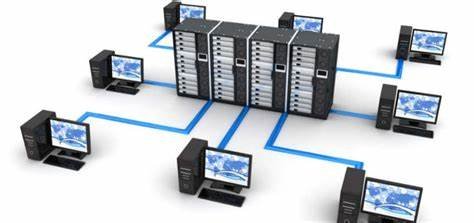Sustainable infrastructure design is becoming increasingly crucial as the world faces the challenges of climate change, population growth, and environmental degradation. The shift towards green, eco-friendly infrastructure is essential to creating sustainable cities and communities. In this article, we explore the principles, benefits, and examples of sustainable infrastructure design and how it contributes to a greener future.
1. What is Sustainable Infrastructure Design?
Sustainable infrastructure design refers to the creation and development of infrastructure that minimizes environmental impact while enhancing the social and economic well-being of communities. It focuses on reducing carbon footprints, promoting energy efficiency, and using materials that are renewable and less harmful to the environment.
Key Principles of Sustainable Infrastructure Design:
- Energy Efficiency: Incorporating energy-efficient technologies that reduce energy consumption and greenhouse gas emissions.
- Use of Renewable Resources: Prioritizing renewable energy sources, like solar, wind, and hydropower, to power infrastructure.
- Water Conservation: Designing systems that reduce water usage, manage wastewater effectively, and incorporate rainwater harvesting.
- Eco-Friendly Materials: Utilizing sustainable building materials that are durable, recyclable, and have minimal environmental
2. Benefits of Sustainable Infrastructure
Adopting sustainable infrastructure practices provides numerous benefits that contribute to both the environment and society. From reducing environmental harm to enhancing economic resilience, sustainable infrastructure is crucial for long-term urban development.
Environmental Benefits:
- Reduced Carbon Emissions: Sustainable infrastructure reduces reliance on fossil fuels and lowers carbon emissions.
- Waste Reduction: It promotes the use of recycled materials and reduces waste generation during construction and operation.
- Biodiversity Preservation: Green spaces, urban forests, and wildlife corridors preserve local ecosystems and support biodiversity.
Social Benefits:
- Improved Public Health: Sustainable infrastructure often includes green spaces and clean energy, which enhance air quality and reduce pollution, contributing to better public health.
- Enhanced Quality of Life: Access to sustainable public amenities, such as parks and renewable energy-powered public transport, enhances the livability of cities.
- Community Engagement: Sustainable design often involves community input, ensuring that infrastructure meets the needs and desires of local populations.
Economic Benefits:
- Long-Term Savings: While sustainable infrastructure may have higher initial costs, it saves money in the long run due to lower operating and maintenance costs.
- Job Creation: Sustainable infrastructure projects often require a workforce skilled in green building practices, creating new job opportunities.
- Increased Property Values: Areas with sustainable infrastructure tend to have higher property values, making them attractive for investment and development.
\
3. Key Components of Sustainable Infrastructure
Sustainable infrastructure encompasses various elements, from energy systems to transportation networks, each playing a crucial role in supporting environmental, social, and economic goals.
Sustainable Energy Systems:
- Solar and Wind Energy: Integrating solar panels and wind turbines into infrastructure can reduce dependency on nonrenewable energy sources.
- Smart Grids: These grids optimize electricity distribution, reduce energy waste, and allow for better integration of renewable energy sources.
Green Building Design:
- Energy-Efficient Buildings: Sustainable buildings are designed with materials that promote energy conservation, including advanced insulation, windows, and HVAC systems.
- Green Roofs and Walls: Incorporating vegetation into roofs and walls reduces the urban heat island effect and improves air quality.
- Passive Design: Using natural elements, like sunlight and airflow, to reduce the need for artificial heating and cooling.
Sustainable Transportation:
- Public Transit Systems: Investing in clean, energy-efficient public transport reduces car usage, leading to lower emissions and less congestion.
- Biking and Walking Infrastructure: Designing walkable and bikeable cities encourages active transportation, reducing the need for cars and improving public health.
- Electric Vehicle Charging Stations: As electric vehicles become more common, infrastructure must adapt to include widespread charging stations, reducing the reliance on fossil-fuel-powered cars.
Water Management:
- Rainwater Harvesting: Collecting and storing rainwater for non-potable uses, such as irrigation, can help reduce water consumption and ensure a more sustainable water supply.
- Stormwater Management: Implementing systems to manage stormwater runoff, like permeable pavements and green roofs, helps prevent flooding and reduces strain on urban drainage systems.
4. Innovative Sustainable Infrastructure Projects
Around the world, many cities and countries are leading the way in sustainable infrastructure design. These projects serve as models for how communities can embrace green solutions to create a more sustainable future.
Notable Examples:
- The Edge (Amsterdam, Netherlands): Known as the world’s most sustainable office building, The Edge uses smart technology to reduce energy consumption, maximize natural light, and provide optimal indoor air quality.
- Masdar City (Abu Dhabi, UAE): A fully planned, sustainable city powered by renewable energy sources, Masdar City is designed to reduce energy consumption by 40% and water usage by 50%.
- Hammarby Sjöstad (Stockholm, Sweden): This eco-district is designed with a closed-loop system that uses renewable energy, recycles water, and uses green roofs and waste-to-energy systems, all contributing to its sustainable infrastructure.
- Seoul’s Cheonggyecheon Stream (South Korea): The restoration of this urban stream included green infrastructure such as water filtration systems, parks, and pedestrian walkways, creating an eco-friendly public space in the heart of the city.
5. The Future of Sustainable Infrastructure
The future of sustainable infrastructure lies in innovation, technology, and collaboration. As cities continue to grow, the demand for sustainable solutions will increase, and new technologies will enable more efficient, eco-friendly infrastructure.
Emerging Trends:
- Circular Economy: The concept of a circular economy, where materials and resources are reused and recycled, is gaining traction in infrastructure design, reducing waste and conserving resources.
- Climate Resilience: Infrastructure is being designed with climate resilience in mind, ensuring that it can withstand extreme weather events and adapt to climate change impacts.
- Smart Cities: Technology will play a critical role in future sustainable infrastructure, with smart cities using sensors, data analytics, and automation to optimize energy, water, and waste management systems.
Conclusion
Sustainable infrastructure design is essential for creating greener, more livable cities and communities. By focusing on energy efficiency, renewable resources, waste reduction, and environmental stewardship, sustainable infrastructure can help mitigate climate change, enhance public health, and improve economic resilience. As innovative technologies and design practices continue to evolve, the future of infrastructure looks brighter, promising a more sustainable world for future generations.




